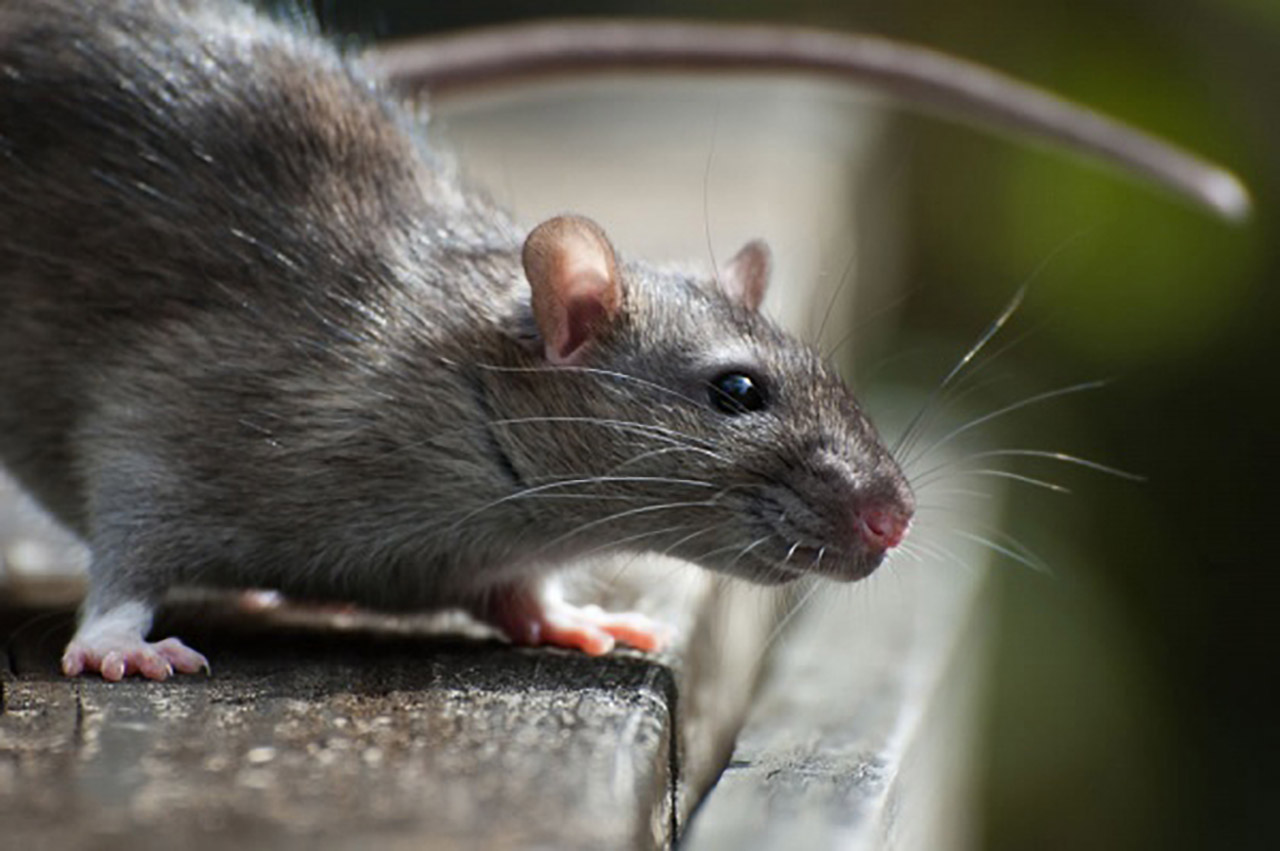Roof Rat Facts
The roof rat is also known as the palm rat, the black rat, the house rat, and the ship rat. Roof rats are the leading rodent pest in Florida and in other tropical climates. They are climbers and prefer to nest off the ground in trees, especially palms. Fruit is one of their main food sources.

Roof Rat Damage
Inside, these rodents can tear through insulation or gnaw on electrical wires, potentially short-circuiting any electronic devices. If they get into your kitchen, they’ll eat any food they can get their paws on. Outdoors, they can damage your garden by eating plants, fruits, and vegetables. They can also find their way into garbage cans and munch on any food scraps tossed away. Roof rats will chew on the sealant along roof tiles, which is another reason why they get into your home.
Roof Rat Infestation
Signs of a roof rat infestation include droppings found inside of your home and gnaw marks on food packaging, wooden structures, electrical wires or other household items. You may also notice greasy “rub marks” from dirt and oil on the bodies of rats on beams, rafters, walls or other fixtures. At night you will probably hear sounds of gnawing, clawing or screeching.
As is the case with many rats, the roof rat can transmit a variety of different diseases that are harmful to both humans and other animals. Some of these diseases include murine typhus, leptospirosis, salmonellosis, rat-bite fever and even the plague. A few of these diseases are rarer than others, however, if you find yourself in contact with rats and develop flu-like symptoms or skin discolorations within a few days after exposure, immediately seek medical attention.
Do you have a roof rat infestation? Catseye’s customized rodent control services ensures that you have complete protection in the fight against rats. We’ll put a stop to current infestations and prevent any future ones from popping up.
Types of Roof Rats
Roof Rat Identification
A roof rat’s body spans from three to eight inches in length and they have the ability to jump as far as eight feet. A roof rat’s lifespan is two to three years. Female rat litters can range from five to eight babies and they can give birth up to six times a year. Roof rats generally prefer vegetables, fruits, and grains.
Roof Rats in the Attic, Walls & Home
You’ll find these rats in the tallest parts of structures. They will nest in ceiling voids, in trees, top-floor crawl spaces, and storage rooms where there is little activity. Outdoors, they can be found in vegetation, wood, or other organic debris.
Their ease of accessing indoor areas leads to a frequent need for palm rat pest control measures, especially in the southern part of the United States. Since these rats spend most of their time in trees feeding, it gives them easy access to your roof.
Frequently Asked Questions
What do roof rat droppings look like?
Roof rat droppings are dark, banana-shaped pellets. They are usually about a 1/2-inch long.
How do you control a roof rat infestation?
Since these rats are excellent climbers, make sure to pay special attention to the roof of your home where you can seal any potential entryways. Using concrete, steel wool, or metal will help keep them out in the first place. Remove any vines or ivy that may be covering your home. This will make it more difficult for these rats to climb and enter the structure.
Eliminating their food sources is also key, so storing your snacks in airtight containers will not only help keep your food fresh, but can also discourage roof rats from raiding your cabinets. It also helps to trim your shrubbery and trees. This removes potential shelters for the rats, further discouraging nesting.
Frightening them away with sound devices may work for a short period of time. However, these rats easily adapt to their surroundings, so they will grow accustomed to the noise and eventually return. The same is true for visual repellents.
Homes or properties that face any type of rat infestation should immediately call a licensed pest control expert to remove it. This ensures the safety of everyone on the property.
What are the benefits of professional rat or rodent pest control?
Finding and removing roof rats on a property can be challenging, especially if there are numerous nesting sites in the attic, basement, or walls of a business or home.
Expert pest specialists have the educational background, equipment, and skill to control and remove rodents from a property in a safe, efficient way.
If you’re struggling with rodents like roof rats on your property, contact us. Our technicians can remove the critters and help you regain control of your property and sanity.



